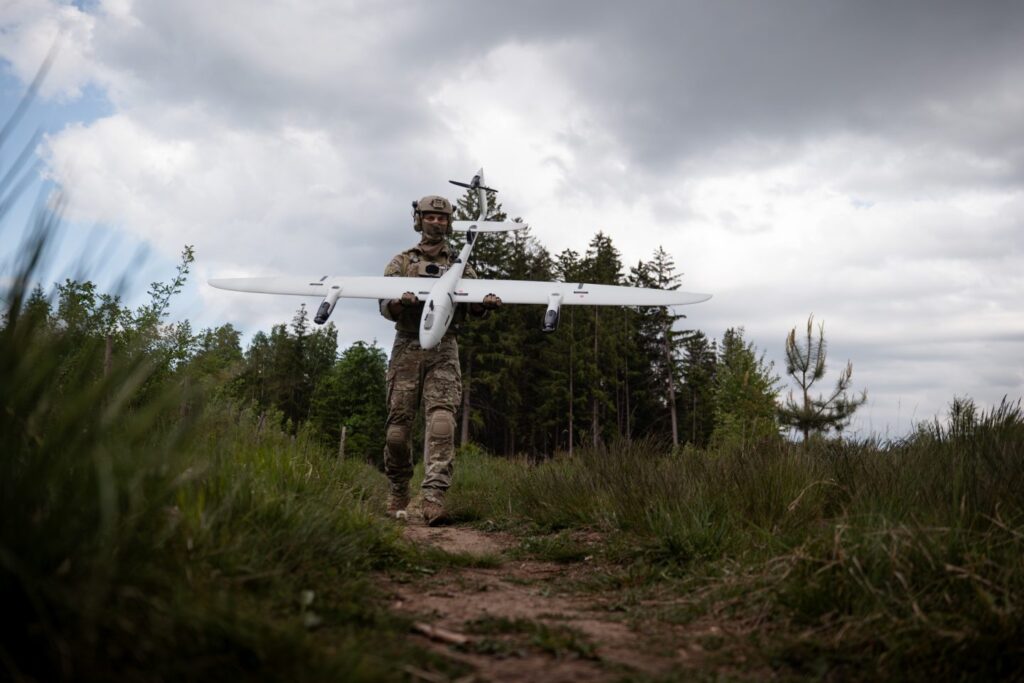Only months into Russia's full-scale invasion, in May 2022, a German-made reconnaissance drone helped Ukraine destroy a Russian battalion crossing the Siverskyi Donets river, helping Kyiv in one of its most decisive artillery victories. Since then, German defense startups have embedded themselves deep in Ukraine’s war — and the war has embedded itself in their engineering, Spigel says.
German drone firms adapt to real-time combat in Ukraine
German defense companies, especially Berlin-based Quantum Systems, are learning daily from Ukraine’s frontlines, Spiegel reports. Their Vector drones are tested under heavily jammed frontline conditions, forcing rapid adaptation.
"What worked last week might not work next week," said Quantum representative Oleksandr Bereshnyi in the firm’s Kyiv office.
Engineers are now developing drones that can resist Russian jamming by shifting radio frequencies, based on weekly feedback from Ukrainian forces. This kind of “combat-proven” data used to be rare — now it’s constant.
Ukraine gets high-tech tools, Germany gets battlefield data
The exchange is a two-way street. Ukraine receives high-end Western technology, while Germany gets real-time data to prepare for potential Russian attacks on NATO soil. Recent Russian airspace violations in Eastern Europe and Denmark exposed gaps in Western defenses, especially against low-cost drones.
German rules meet battlefield failure
Munich’s Arx Robotics hit a frontline problem. Civilian safety rules required Bundeswehr kill switches — Russia then identified the mechanism’s frequency and shut a robot down.
Dubbed ‘gold-rimmed solutions,’ such features often fail in war.
"Simple solutions sometimes outperform German engineering," said Marc Wietfeld, the founder of Arx Robotics.
Wietfeld criticized Western defense policy as reactive and slow. He said new European systems are usually developed only after Russia unveils new equipment, making them outdated by the time they arrive. As an example, he pointed to Europe’s next-generation fighter jets, designed to overcome modern Russian air defenses but not expected to be operational before 2035.
Swarms and autonomy: the new phase of drone warfare
As Russia gains ground in drone output, Germany pushes swarm concepts. Quantum co-founder Florian Seibel launched a second startup, Stark Defence, to build armed drones like the Virtus. These will operate alongside the Vector in coordinated swarms — the first detects, the second attacks.
Another firm, Auterion, is taking it further. Its chip-based Nemyx kits upgrade existing drones with swarm capability and target acquisition. CEO Lorenz Meier said they aim to deliver over 33,000 kits to Ukraine this year.
Read also
-
Munich joins list of European airports disrupted by drones as airspace incidents rise
-
German Vector and Twister drones already help Ukraine track targets. Soon, they’ll come armed with power to hear artillery before it hits
-
Ukraine’s cheap drones did not just hit Russia—they prompt US to rethink homeland security
-
German Quantum-Systems opens its drone factory in Ukraine




